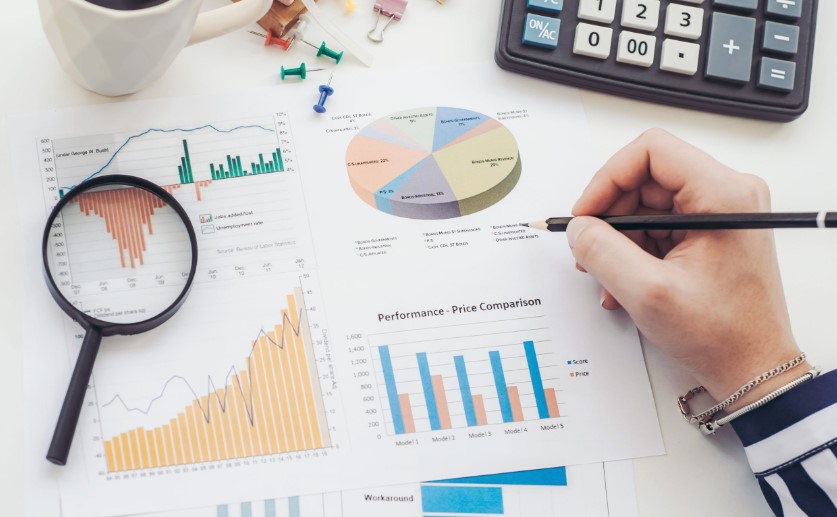Creating Project Reports to Enhance Project Communication
Let’s delve into the world of project reports, a realm where data meets narrative, and where analysis shapes strategy. As a seasoned project manager, I’ve seen firsthand how a well-crafted project report can transform abstract ideas into concrete plans.
Project reports aren’t just about facts and figures; they’re the lifeblood of any project, providing critical insights and direction. They’re the roadmaps that guide us from conception to completion, helping us navigate potential pitfalls and seize opportunities.
What is the Purpose of a Project Report

Expounding on the vital intersection of narrative and analytical data is a project report’s purpose. It forms the linchpin of any endeavor, converting vague thoughts into actionable strategies. At its most fundamental level, a project report is a directional compass pointing the path from where a project starts to where it needs to end.
The Role of a Project Report in Project Management
A project report isn’t simply a regular document. It’s a tool that provides clarity, improves understanding, and streamlines MS project software. An effective project report allows for the seamless integration of all elements that comprise a project. From time management to resource allocation, its influence is all-encompassing.
- Planning: A project report maps out a work plan to guide a project from beginning to end. For example, deploying a new software tool may require steps including analysis, design, development, testing, and maintenance.
- Execution: A project report helps ensure the smooth execution of those planned steps. In the context of the software tool, it supervises the successful completion of each development phase.
- Communication: A project report communicates the status of a project to all stakeholders. So, those waiting for the software tool’s deployment remain informed about its progress.
Evaluating Progress and Performance
Another purpose of a project report is to assess both progress and performance. It examines whether the project is sticking to the predetermined course or if it’s deviating. Project reports also measure the effectiveness of the strategies utilized, allowing for necessary adjustments to ensure that results align with expectations.
Suppose a new marketing strategy is rolled out. Here’s how the assessment plays out:
- Tracking: A project report tracks marketing initiatives, noting their implementation timeline and the tactics being executed.
- Reviewing: The results of those initiatives are then reviewed. Factors like customer response, sales figures, and social engagement are considered to determine the strategy’s impact.
- Adjusting: Based on the outcomes, the marketing strategy may then be tweaked to better meet the project’s goals. Any necessary changes are recorded in the project report for future reference.
All in all, the primary purpose of a project report is to facilitate the smooth sailing of a project from inception to completion. It’s essentially a roadmap, guiding the journey, tracking the progress, and ensuring a successful arrival at the destination.
Components of an Effective Project Report

Project reports, as we’ve discussed, are indispensable tools in leading a project towards its ultimate success. Comprehending the components that constitute a project report broadens our understanding and hones our proficiency in managing these reports effectively. In this section, let’s dig deeper into what exactly goes into a project report.
Executive Summary
An Executive Summary serves as an encapsulated overview of the full report. It’s a must-have, providing a brief, condensed version of your project’s essentials – from objectives and scopes to approaches and outcomes. It includes the project’s current status and potential issues, if any. This centrality contains, for instance, dates, like the start and end of the project, and key milestones achieved, providing a bird’s eye perspective on the project.
Project Objectives and Scope
This section is where you outline your project’s goals and boundaries. It offers a clear understanding of what the project intends to accomplish, its limits, what is included, and what isn’t. Here, for example, you would list specific targets or outcomes intended from the project, along with any constraints, like timeframes, resources, or budgets.
Methodology and Approach
In this segment, you’ll cover how you plan to achieve the outlined objectives, referring to the tools, methods and strategies put in place. It’s this part, circumstance allowing, where you’d document any specific project management methodologies applied, such as Agile or Waterfall, affording in-depth insight into the project’s process.
Analysis of Findings
The Analysis of Findings is where you present, interpret, and discuss the project’s accumulated data and results. Figures and metrics dominate here, painting a comprehensive, numerical picture of the project’s progress, performance, and any areas requiring improvement.
Recommendations and Action Plan
One of the final components of a solid project report, the Recommendations and Action Plan section, offers a forward-thinking perspective. It contains proposed solutions to any problems identified and plans to steer the project towards its objectives. For instance, this could include corrective actions taken, preventive measures planned, or improvement opportunities spotted based on the report’s findings.
The Process of Compiling a Project Report

Continuing from examining project brief, we delve into the process of assembling those components. This entails collecting and analyzing data relevant to the project, followed by coherently organizing that information to create a comprehensive report.
Gathering and Analyzing Data
The first significant process step lies in amassing and scrutinizing data related to the project. I begin by identifying key data sources relevant to the project objectives, such as project activity logs, survey results, or financial records. Once identified, the data collection takes place, ensuring inclusiveness and accuracy in the process.
Subsequently, I analyze the collected data. This phase involves identifying patterns, discerning correlations, and drawing insights. For instance, I might track cost overruns against project phases to identify budgetary leakages. I ensure objective analysis by leveraging trusted data analytic tools, producing credible findings.
Structuring Information Coherently
Post data analysis, correctly organizing the data becomes paramount. I ascribe each piece of data to the relevant sections, such as Executive Summary, Project Objectives and Scope, Methodology and Approach, Analysis of Findings, and Recommendations and Action Plan.
For instance, details relating to project progress fall into ‘Analysis of Findings’, whereas associated project success implications fit under ‘Recommendations and Action Plan’. This aids in providing a clear and logical flow to the report, making it easy for stakeholders to comprehend and act upon the presented information.
With these steps, I ensure that the project report becomes a comprehensive guide, perfectly encapsulating the project performance, and serving as a blueprint for future actions.
Design Considerations for Project Reports

Influencing project report design involves a combination of conflicting elements. Primacy goes to simplicity, earning buy-in from precision and relevance. Let’s dive in deeper into the subtleties of the visual aspects and readability, two core design considerations.
Visual Aids and Charts
Visual aids and charts present a universal language. I use them to enhance the understanding of complex data in my reports. Incorporating infographics, pie charts, line graphs, or bar charts depends on the data set’s nature and the information I intend to convey.
For instance, for project timeline representations, a Gantt chart becomes my go-to choice. It’s visual, intuitive and communicates progress over time effectively. For distributions or comparative analyses, I find bar graphs or pie charts more suitable. Whenever I select a visual aid, the sole determinant remains clarity, not aesthetics.
Readability and Accessibility
Readability forms the cornerstone of any well-crafted project report. My primary goal during the design phase revolves around making the content easy to read and understand. For this, I apply a few straight-forward tactics.
Mirroring the content’s hierarchy in its presentation, I distribute information into clearly labeled sections and subsections. Bullet points and numbering serve as beneficial tools for listing or sequencing data. The use of headings and subheadings also helps navigate through the report effortlessly.
Font selection, another vital factor, contributes substantially to readability. A rule of thumb that I adhere to: use traditional, easy-to-read fonts such as Arial or Times New Roman. Also, maintaining a font size that ensures comfortable reading without straining the eyes typically falls between 10 to 12 points.
Accessibility complements readability. In my pursuit of making project reports universally accessible, I consider utilizing alt text for images and ensuring colorblind-friendly palettes. Additionally, maintaining a high contrast between text and background amplifies the report’s visibility across different viewing conditions, benefiting those with visual impairments.
Visual aids and readability hygiene are at the forefront of my design considerations. Juggling these aspects leads to a project report that is not only effective but also easy on the eyes, enhancing its overall impact.
Challenges in Creating Project Reports

Moving further from report design, I’ll dive into some pressing challenges faced during project report creation. Bracing these common issues improves the value and usability of such reports.
Addressing Unforeseen Project Variables
Unforeseen variables, with their unpredictable nature, pose formidable challenges. These variables, like unexpected changes in project scope, time, or budget alterations, can skew data in project reports. For instance, let’s take an abrupt change in resource allocation. Traditional models inadequately address these fluid elements, creating data gaps in final reports. Harnessing adaptive frameworks, such as Agile methodologies, can alleviate this issue, accommodating change in actionable project reports.
Maintaining Objectivity and Clarity
Preserving objectivity and clarity might seem straightforward but isn’t always so in the heat of project progress. Emotions often cloud judgement, and bias may creep into one’s analysis and discussions. This distortion obstructs clear communication, taints decision-making, and impacts report integrity. For example, a team lead favoring their squad’s effort may portray an exaggerated success rate. However, fostering a culture of transparent data depiction, free from personal favor or prejudice, ensures unadulterated report content. Regular audits, peer reviews, and automated data validation tools aid in achieving this clarity and objectivity.
Tips for Enhancing Your Project Report

In this section, I’ll talk about the ways to improve the quality and effectiveness of your project report. These enhancements aim to increase objectivity, depict data transparently, and streamline project reporting effort.
Incorporating Feedback
In the quest for report perfection, integrate feedback from your stakeholders. This includes peers, project team members, and superiors. Accepting feedback doesn’t suggest your report’s inferior quality, but it helps identify areas of potential misunderstanding. For example, you may present data in a bar graph that seems apparent to you. Still, a stakeholder may find a pie chart easier to understand. Incorporating their feedback makes the report not only more accessible but also more accurate.
Remember, the constraint is that the feedback must always align with the project’s objectives. So, apply those suggestions that aid in achieving project goals, avoiding changes that may lead to ambiguity or misalignment.
Using Project Management Tools
On another note, consider using sophisticated project management tools for a streamlined reporting process. A management tool can automate many aspects of project reporting. For instance, applications like Trello or Asana provide real-time updates on project status, influencing the report’s accuracy positively.
Embrace digital technology for project management, but prefer utility over novelty. A tool may have numerous features, but it’s beneficial only as long as it aligns with your project requirements. For example, if you’re running an Agile project, use a tool that supports the Agile framework, like Jira or VersionOne. Weigh the tool’s utility from the perspective of your project’s unique demands and your team’s work style before investing.
Conclusion
So there you have it. Project reports aren’t just paperwork, they’re essential tools for successful project management. By integrating visual aids and ensuring objectivity, we can overcome challenges and deliver comprehensive reports. Let’s not forget the value of stakeholder feedback. It’s a goldmine that can significantly enhance our reports’ clarity and accuracy. And of course, the right project management tool can make all the difference. Whether it’s Trello or Asana, the key is to find a tool that fits our project needs and team dynamics. Remember, a well-crafted project report is more than just a document, it’s a roadmap to project success.
Frequently Asked Questions
Q1. What is the significance of project reports in the article?
Project reports are essential for effective project management. They outline key aspects and employ visual aids like Gantt charts for better comprehension. The importance of maintaining objectivity in report creation, irrespective of unforeseen changes, is a point of emphasis.
Q2. What are the challenges in creating project reports?
The article hints at the difficulties faced while preparing project reports due to unexpected variables. The necessity to maintain objectivity despite these uncertainties is underscored.
Q3. How should project reports be enhanced according to the article?
The article suggests enhancing project reports by incorporating feedback from stakeholders to increase clarity and accuracy, and emphasizing alignment with project objectives.
Q4. What are recommended tools for streamlining project reports?
The article recommends using project management tools like Trello or Asana. These tools help streamline the reporting process but should be selected based on project requirements and team work styles.

Leave a Reply